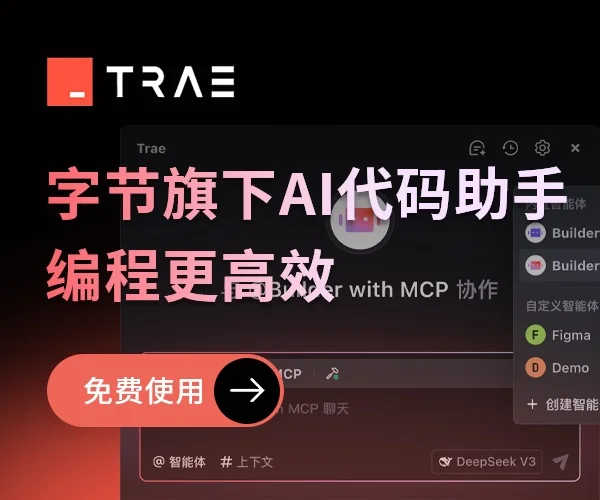iOS开发基础135-Core Data
Objective-C (OC) 中使用 Core Data 是iOS应用开发中管理模型层对象的一种有效工具。Core Data 使用 ORM (对象关系映射) 技术来抽象化和管理数据。这不仅可以节省时间,还能减少编程错误。以下是使用 Core Data 的详细介绍,包括示例代码,以及深入底层的一些分析。
基本概念
-
持久化容器 (
NSPersistentContainer): iOS 10 引入的,封装了 Core Data 栈的设置,包括托管对象模型 (NSManagedObjectModel),持久化存储协调器 (NSPersistentStoreCoordinator),和上下文 (NSManagedObjectContext)。 -
托管对象模型 (
NSManagedObjectModel): 描述应用的数据模型,包括实体(Entity)和这些实体之间的关系。 -
持久化存储协调器 (
NSPersistentStoreCoordinator): 负责协调托管对象上下文和持久化存储。 -
上下文 (
NSManagedObjectContext): 用于在内存中管理对象。执行创建、读取、更新、删除操作时,这些更改暂时只发生在上下文中,直到保存更改到持久层。
使用示例
以下是一个简单的使用 Core Data 创建和查询对象的示例:
步骤 1: 配置数据模型
首先,通过 Xcode 的 Data Model Editor 创建数据模型文件(.xcdatamodeld)。假设定义了一个 Person 实体,有 name 和 age 两个属性。
步骤 2: 设置持久化容器
在 AppDelegate 中设置持久化容器:
#import <CoreData/CoreData.h>
@interface AppDelegate : UIResponder <UIApplicationDelegate>
@property (readonly, strong) NSPersistentContainer *persistentContainer;
- (void)saveContext;
@end
@implementation AppDelegate
@synthesize persistentContainer = _persistentContainer;
// 懒加载 persistentContainer
- (NSPersistentContainer *)persistentContainer {
// 如果容器已经被初始化了,直接返回
if (_persistentContainer != nil) {
return _persistentContainer;
}
// 使用名为 MyModel 的模型文件创建容器
_persistentContainer = [[NSPersistentContainer alloc] initWithName:@"MyModel"];
[_persistentContainer loadPersistentStoresWithCompletionHandler:^(NSPersistentStoreDescription *storeDescription, NSError *error) {
if (error != nil) {
// 错误处理,实际应用中应该替换为更合适的错误处理
NSLog(@"Unresolved error %@, %@", error, error.userInfo);
abort();
}
}];
return _persistentContainer;
}
@end
步骤 3: 使用 Core Data 新增和查询
在合适的地方(如 ViewController)进行数据的新增和查询:
#import "AppDelegate.h"
#import <CoreData/CoreData.h>
- (void)insertNewPersonWithName:(NSString *)name age:(int)age {
AppDelegate *appDelegate = (AppDelegate *)[[UIApplication sharedApplication] delegate];
NSManagedObjectContext *context = appDelegate.persistentContainer.viewContext;
// 创建新的 Person 实体对象
NSManagedObject *newPerson = [NSEntityDescription insertNewObjectForEntityForName:@"Person" inManagedObjectContext:context];
[newPerson setValue:name forKey:@"name"];
[newPerson setValue:@(age) forKey:@"age"];
NSError *error = nil;
// 保存到持久层
if (![context save:&error]) {
NSLog(@"保存失败: %@, %@", error, error.userInfo);
}
}
- (NSArray *)fetchPersons {
AppDelegate *appDelegate = (AppDelegate *)[[UIApplication sharedApplication] delegate];
NSManagedObjectContext *context = appDelegate.persistentContainer.viewContext;
NSFetchRequest *fetchRequest = [NSFetchRequest fetchRequestWithEntityName:@"Person"];
NSError *error = nil;
NSArray *results = [context executeFetchRequest:fetchRequest error:&error];
if (!results) {
NSLog(@"查询失败: %@, %@", error, error.userInfo);
}
return results;
}
深入分析
Core Data 的底层使用了 SQLite 作为默认的持久化方式(尽管你可以选择内存或者自定义解决方案),但开发者无需直接与数据库交互,所有的操作都是通过上述的对象和 API 完成。Core Data 框架负责转换这些操作为 SQLite 命令并执行。
Core Data 性能优化
-
批量请求: iOS 8 引入了批量删除和更新,这样可以在不加载数据到内存的情况下直接在持久层执行操作,极大提升效率。
-
预获取: 对于频繁访问的关联对象,可以使用预获取来减少查询次数。
-
轻量级迁移: 对于数据模型的更改,通过轻量级迁移避免手动处理数据结构变动。
封装
对于Core Data的使用,进行二次封装可以提高代码的复用性,让外部调用变得更加简洁。我们可以创建一个单例类CoreDataManager来管理Core Data的常见操作,比如增删改查。
首先,你需要确保你的数据模型(.xcdatamodeld文件)已经设置好,举个例子,这里假设我们有一个Person的Entity,它有两个属性:name(String类型)和age(Int16类型)。
步骤 1: 创建Core Data管理类
#import <Foundation/Foundation.h>
#import <CoreData/CoreData.h>
@interface CoreDataManager : NSObject
@property (readonly, strong) NSPersistentContainer *persistentContainer;
+ (instancetype)sharedManager;
- (void)saveContext;
- (void)insertPersonWithName:(NSString *)name age:(NSNumber *)age completion:(void(^)(BOOL success, NSError *error))completion;
- (void)fetchAllPersons:(void(^)(NSArray *persons, NSError *error))completion;
@end
@implementation CoreDataManager
+ (instancetype)sharedManager {
static CoreDataManager *sharedManager = nil;
static dispatch_once_t onceToken;
dispatch_once(&onceToken, ^{
sharedManager = [[self alloc] init];
});
return sharedManager;
}
- (NSPersistentContainer *)persistentContainer {
@synchronized (self) {
if (_persistentContainer == nil) {
_persistentContainer = [[NSPersistentContainer alloc] initWithName:@"YourModelName"];
[_persistentContainer loadPersistentStoresWithCompletionHandler:^(NSPersistentStoreDescription *storeDescription, NSError *error) {
if (error != nil) {
NSLog(@"Unresolved error %@, %@", error, error.userInfo);
abort();
}
}];
}
}
return _persistentContainer;
}
- (void)saveContext {
NSManagedObjectContext *context = self.persistentContainer.viewContext;
NSError *error = nil;
if ([context hasChanges] && ![context save:&error]) {
NSLog(@"Unresolved error %@, %@", error, error.userInfo);
abort();
}
}
- (void)insertPersonWithName:(NSString *)name age:(NSNumber *)age completion:(void(^)(BOOL success, NSError *error))completion {
NSManagedObjectContext *context = self.persistentContainer.viewContext;
NSManagedObject *newPerson = [NSEntityDescription insertNewObjectForEntityForName:@"Person" inManagedObjectContext:context];
[newPerson setValue:name forKey:@"name"];
[newPerson setValue:age forKey:@"age"];
NSError *error = nil;
if (![context save:&error]) {
NSLog(@"Error saving context: %@, %@", error, error.userInfo);
completion(NO, error);
} else {
completion(YES, nil);
}
}
- (void)fetchAllPersons:(void(^)(NSArray *persons, NSError *error))completion {
NSManagedObjectContext *context = self.persistentContainer.viewContext;
NSFetchRequest *fetchRequest = [NSFetchRequest fetchRequestWithEntityName:@"Person"];
NSError *error = nil;
NSArray *results = [context executeFetchRequest:fetchRequest error:&error];
if (error) {
NSLog(@"Failed to fetch persons: %@, %@", error, error.userInfo);
completion(nil, error);
} else {
completion(results, nil);
}
}
@end
使用封装的CoreDataManager
这里展示如何使用CoreDataManager进行数据操作:
// 插入新的Person对象
[[CoreDataManager sharedManager] insertPersonWithName:@"John Doe" age:@25 completion:^(BOOL success, NSError *error) {
if (success) {
NSLog(@"Person added successfully");
} else {
NSLog(@"Failed to add person: %@", error.localizedDescription);
}
}];
// 获取所有的Person对象
[[CoreDataManager sharedManager] fetchAllPersons:^(NSArray * _Nonnull persons, NSError * _Nonnull error) {
if (error) {
NSLog(@"Failed to fetch persons: %@", error.localizedDescription);
} else {
for (NSManagedObject *person in persons) {
NSString *name = [person valueForKey:@"name"];
NSNumber *age = [person valueForKey:@"age"];
NSLog(@"Fetched person: %@, age: %@", name, age);
}
}
}];
通过上面的封装,我们只需调用简单的方法就可以完成对Person对象的增删改查操作,而不用关心Core Data的具体实现细节。这大大提高了代码的可读性和可维护性。
总结
Core Data 是一个功能强大的框架,通过封装复杂的底层细节,使得数据管理变得更加简单。高效地使用 Core Data 必须理解其背后的原理,并遵循最佳实践来设计应用。



 浙公网安备 33010602011771号
浙公网安备 33010602011771号